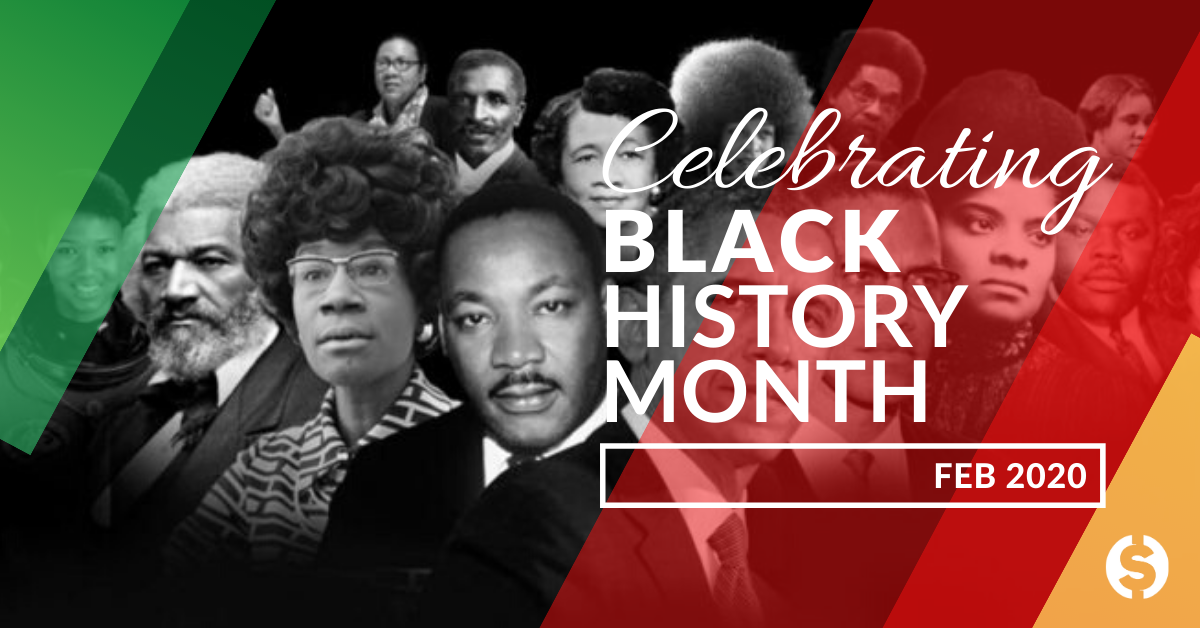
If you’re reading this, you’re probably using one of the most valuable inventions of our time: the internet. Without this worldwide connection, many of your daily tasks wouldn’t exist—whether that’s checking your work email, updating your Facebook status, or reading our latest blog. Over the years, thousands of small inventions have come together to build our digital climate.
Think of it this way — Five years ago, you had to walk across the room to turn off the light. Today, we only need our voice and a Bluetooth connection… but, without Edison and Latimer’s work on the first lightbulbs in the 1880s, your smart home would have no light to control.
In honor of Black History Month, we’re honoring seven black innovators whose work inspired our own unique inventions here at GovSpend… and many of the digital conveniences we have today.
Frank Greene
Frank Greene is considered “one of the first black technologists” and, naturally, receives our first salute. In 1965, he assisted in the development of a patented memory chip—the fastest of its time. His legacy includes high-speed, semiconductor computer systems, two successful technology companies, and renowned venture organization, NewVista Capital—which now maintains a special focus on minority- and female-headed firms. He also stood alongside David Packard, William Hewitt, and 60 others as they were inducted into the Silicon Valley Engineering Hall of Fame.
Mark Dean
Born in 1957, Mark Dean is one of the pioneers credited for launching the personal computer era. Yes—he’s one of the ones you can thank for starting the evolution that led to the tiny computer in your hands as you read this article. He holds three of IBM’s nine original patents, having dedicated his career to making machines more accessible and more powerful. He helped develop the IBM PC, worked on a voice-activated tablet, and is now the CTO for IBM Middle East and Africa.
Mary Van Brittan Brown
Long before the RING doorbell caught package thieves and would-be burglars, Mary Van Brittan Brown inspired the idea in 1966. She was the first to devise a system that used a camera to screen for unwanted guests. Rather than complex video products of today, she used the simple technology at her disposal and—this is the best part—used peep-holes she built in her walls to have visitors projected onto a monitor. Today’s systems borrow elements from her homemade design… and even the government spent over $100 million dollars on security cameras in 2019.
John Thompson
When John Thompson was chairman and CEO of Symantec—the leading computer security software company now known as Norton—he was the only black man in his position at a major tech company. After being appointed to the National Infrastructure Advisory Committee (NIAC), purchasing a share of the Golden State Warriors, and being featured by Forbes, Thompson went on to become the only black man on Microsoft’s board of directors.
Katherine Johnson
The subject of the smash film “Hidden Figures,” Katherine Johnson remains one of the most influential minds in aerospace history. Alongside Dorothy Vaughan and Mary Jackson, she powered the launch of astronaut John Glenn into orbit and launched the United States into a new age of space technology. Calculating trajectories, launch windows, and more for dozens of flights throughout her career, Katherine’s work was critical to the Apollo moon landing and, indirectly, the innovations made by NASA today.
James E. West
In 1962, James West invented the first practical electret microphone. It was the first to use a charged material rather than a polarizing power supply. Of course, many people think of microphones as big, clunky devices used by singers and radio broadcasters… but you use one of West’s devices almost every day. Tiny, electric microphones make it possible for you to use your cellphone, camera, and digital recorders. For that, you can thank James West.
Roy L. Clay Sr.
Roy Clay is known as one of the pioneers of the digital revolution, having worked as the research and development director of Hewlett-Packard (HP)’s computer division in the 1960s. He worked on the design and construction of the company’s first computers, which introduced HP to the marketplace for the first time—a marketplace where it’s now an industry leader. He later founded Rod-L Electronics, which is the world leader in electrical safety equipment. As one of the key developers of Silicon Valley, he was inducted in their Engineer Council’s Hall of Fame in 2003.
“All successful leaders meet their challenges by starting with a clear vision that creates value for others. They get everyone working together through positive relationships, and they execute at a very high level by making smart decisions.” – Frank Greene
As a business technology company, we’re acutely aware of the many discoveries that make our software possible. The internet is a big one, but… What if there were no computers? No phones? No… digital calculators? GovSpend would just be a pipe dream!
It just goes to show that seemingly small ideas can lead to colossal discoveries.




